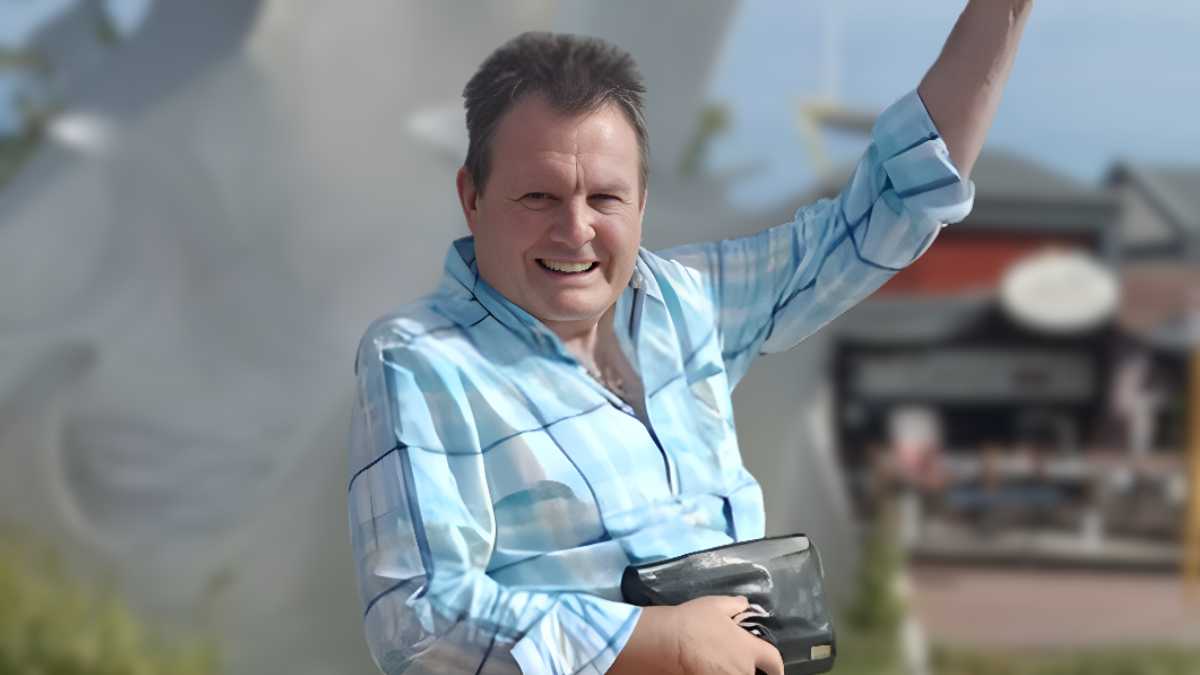Peter Keogh: A Journey Through Pain, Fame, and Personal Liberation

Peter Keogh’s life began in the vast landscapes of rural Western Australia during the 1940s, a time and place marked by conservative values and rigid expectations. Raised in a deeply religious family, Keogh’s childhood was shadowed by severe emotional conflict. From a young age, he grappled with the reality of being gay in an environment that offered no acceptance or understanding. The expectations placed upon him—to follow religious doctrine and conform to societal norms—were at odds with his inner truth.
Keogh’s early years were not just emotionally challenging but also traumatic. He endured physical and sexual abuse that left indelible marks on his psyche. This trauma, coupled with the constant fear of exposure and judgment, shaped a youth riddled with anxiety, secrecy, and emotional isolation. These early experiences laid the foundation for a life that would later involve profound personal transformation and public reckoning.
Escaping to London: Theatre and Identity
In his pursuit of liberation and creative expression, Peter Keogh made a life-altering move to London. For many Australians of the era, London represented opportunity, sophistication, and, perhaps most importantly for Keogh, anonymity and escape. Immersing himself in the vibrant theatre scene, Keogh found both community and purpose.
London was where Keogh would marry British actress Su Pollard, known for her role in the hit TV series Hi-de-Hi!. Their marriage in the early 1980s attracted significant public attention. At face value, it appeared to be a glamorous union between two theatrical personalities. However, behind the facade was a more complex narrative. Keogh has openly acknowledged that he knew he was gay at the time of their marriage. His decision to marry Pollard stemmed from a desire for companionship, stability, and perhaps a subconscious hope that love and circumstance could realign the realities of his identity.
Despite the personal conflicts underlying their marriage, Keogh’s time with Pollard placed him within a glittering social circle that included British royalty. He formed a friendship with Princess Diana and mingled with celebrities, living a life that many would envy. Yet, beneath the glamour, his personal truth remained largely hidden.
The Fall from Grace: Trial and Scandal
Keogh’s seemingly charmed life took a dramatic turn when he was arrested and tried for theft. The trial was not only public but scandalous, thrusting him into a media spotlight he had not sought. The court case and its coverage were grueling, exposing Keogh to widespread judgment and speculation. For someone already struggling with issues of identity and self-worth, the trial was a devastating blow.
This period marked one of the lowest points in his life. Isolated, humiliated, and emotionally exhausted, Keogh was forced to confront his deepest insecurities and fears. The theft charges may have been the catalyst for his public disgrace, but they also served as the beginning of a long and difficult journey toward self-acceptance and renewal.
Reinvention in the United States
Following the trial, Peter Keogh left London and relocated to the United States. In America, he worked with the legendary actress Debbie Reynolds, diving back into the theatrical and entertainment world. The move provided a much-needed fresh start. It was a period of reinvention, during which Keogh began to embrace his identity more fully, though still away from the public eye.
America offered him not only a geographical escape but also a cultural shift. The environment allowed for greater freedom of expression, and Keogh began laying the groundwork for the personal revelations and literary contributions that would define the next chapter of his life.
Returning Home: Love, Peace, and Authenticity
Eventually, Keogh returned to Australia—a country that had once felt stifling and judgmental. This time, he returned as a different man. He had survived public disgrace, endured emotional and psychological trauma, and had come to terms with his sexuality. In Australia, he began a new life with his partner, Sacha, with whom he has now shared more than thirty years of companionship.
Their relationship is a testament to resilience and love, offering a stark contrast to the secrecy and confusion of his earlier years. Living openly as a gay man in Australia, Keogh finally found the peace and authenticity that had eluded him for decades. His home became a place of refuge and reflection, and his life gained new meaning in stability and acceptance.
Memoirs that Matter: My Hi-De-High Life and Filling in the Gaps
Peter Keogh turned to writing to document his extraordinary life. His first memoir, My Hi-De-High Life, offers readers an inside look into his tumultuous marriage, brushes with fame, criminal trial, and emotional journey. The book is candid and unflinching, marked by the same theatrical flair that defined his professional life.
In the sequel, Filling in the Gaps, Keogh dives deeper into the shadows of his past. The second book explores topics such as childhood abuse, religious trauma, and the psychological burden of living a lie. Both books have been praised for their honesty, vulnerability, and depth.
Through his writing, Keogh has managed to transform personal pain into powerful narratives that resonate with a broad audience. His stories are not just about individual survival—they are about the universal struggle for acceptance, dignity, and truth.
A Voice for the Aging and the Marginalized
Today, Peter Keogh contributes regularly to Starts at 60, a platform aimed at empowering Australians over 60. His columns cover a wide range of topics, including aging, identity, relationships, and LGBTQ+ issues. His voice stands out for its warmth, wisdom, and courage.
Keogh’s life experience gives him a unique perspective on issues often ignored or misunderstood. He writes with a level of empathy that can only come from lived experience. His advocacy for the aging LGBTQ+ community is particularly impactful, offering visibility and validation to individuals who have often felt invisible.
The Legacy of Peter Keogh
Peter Keogh’s story is not just a memoir of one man’s life—it is a narrative that mirrors broader societal changes. From a time when being gay was criminalized and demonized, to a modern era where authenticity is celebrated, Keogh has lived through and contributed to massive cultural shifts.
His life is a case study in transformation. He went from a silenced boy in rural Australia to a publicly scrutinized figure in London, to a healed and whole man living authentically in his homeland. Along the way, he has shown that dignity can be reclaimed, that love can endure, and that the truth, no matter how delayed, is always worth telling.
Keogh’s journey underscores the importance of compassion, both toward oneself and others. It is a reminder that public personas often mask private pain and that redemption is always possible, no matter how far one has fallen.
Conclusion
The life of Peter Keogh is a powerful testament to human resilience. His story speaks to anyone who has ever felt out of place, silenced, or judged. It resonates with those who have endured trauma, sought redemption, or struggled to live authentically.
In a world that is still learning how to embrace diversity and honor personal truth, Peter Keogh’s voice is both relevant and necessary. His life is a beacon of hope, proving that it’s never too late to rewrite your story, reclaim your identity, and live a life defined by honesty, love, and peace.
By telling his story, Peter Keogh has not only healed himself but has also helped others to begin their own journeys toward acceptance and authenticity.



